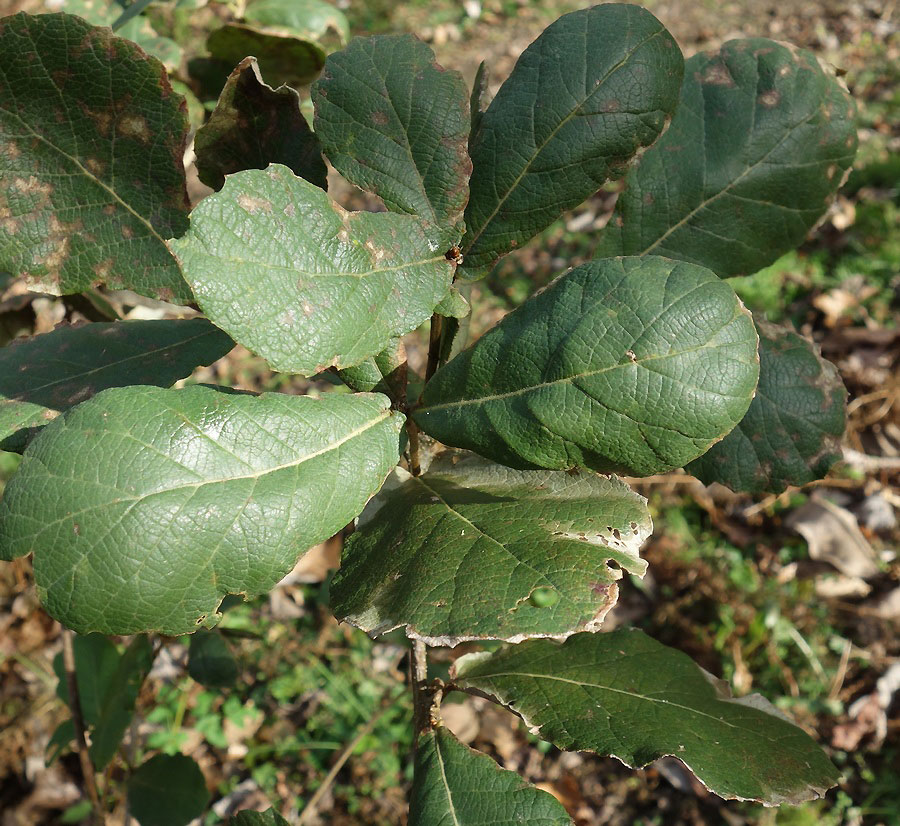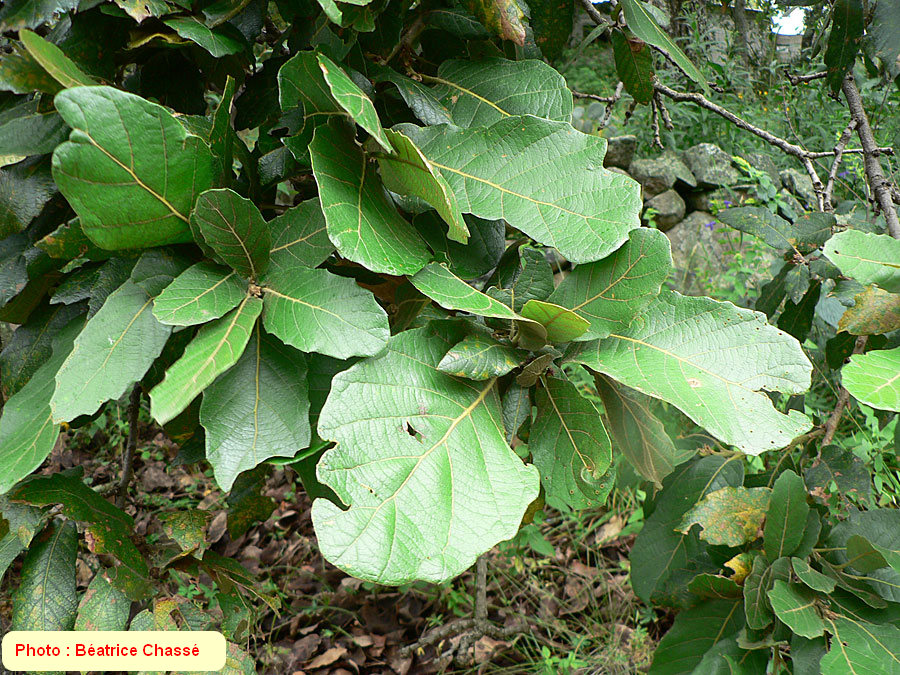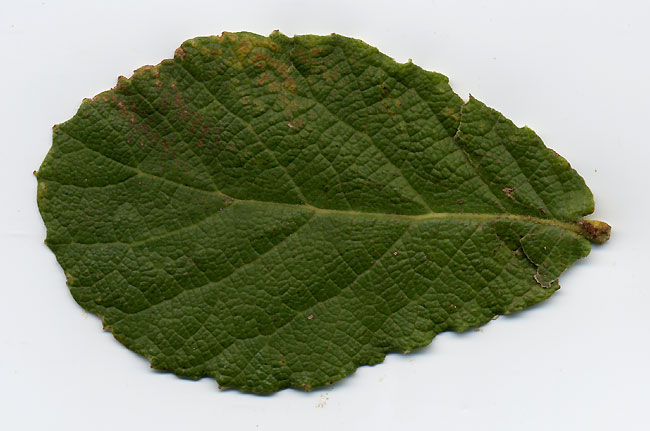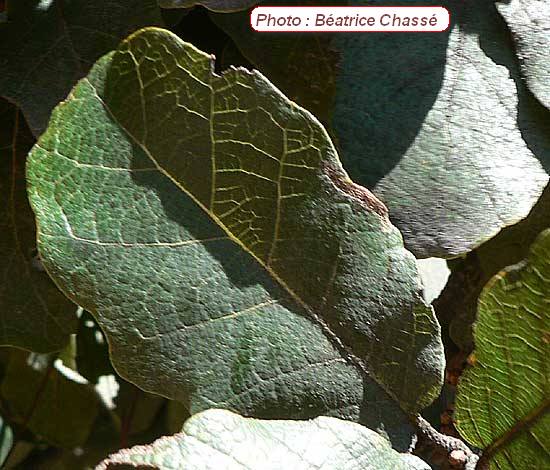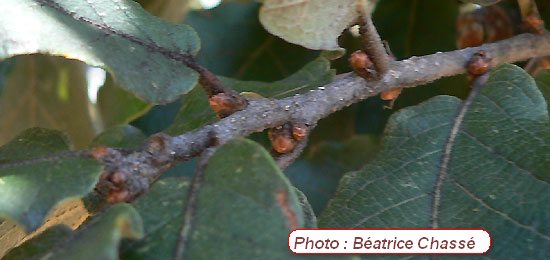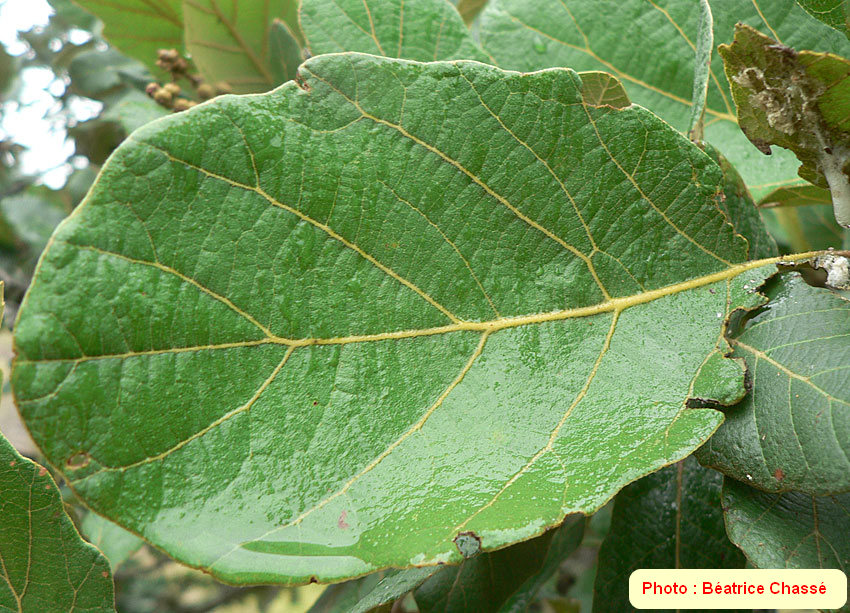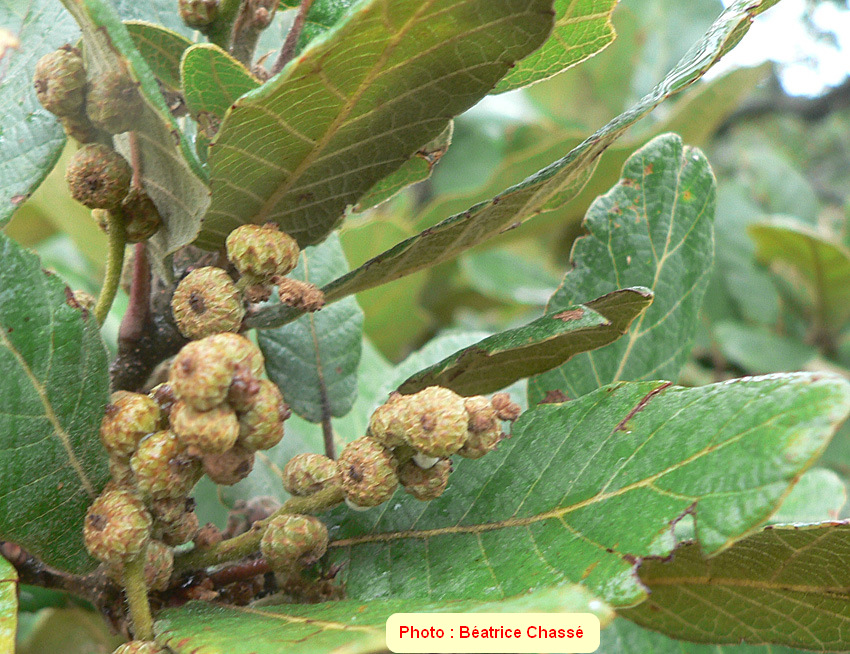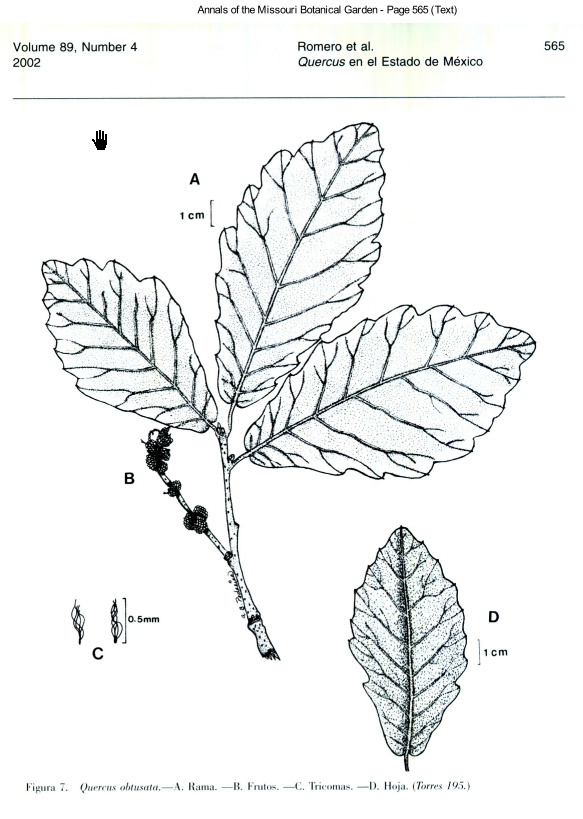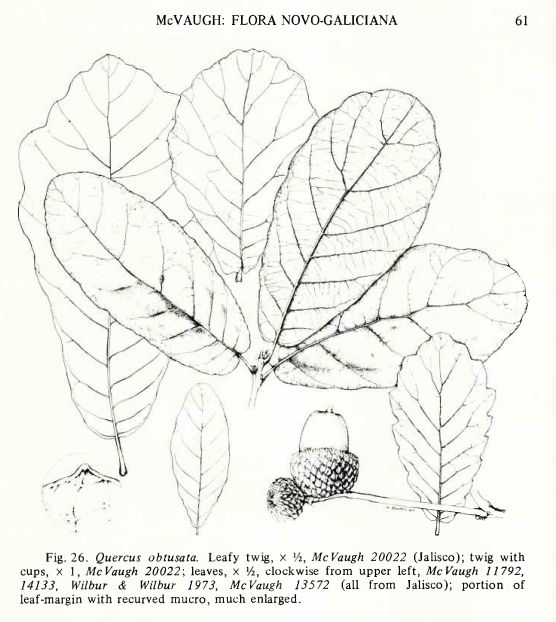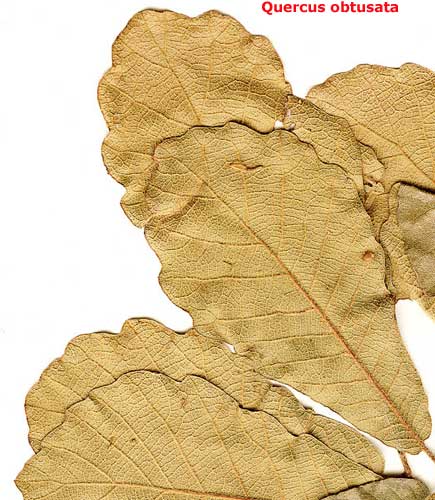| Quercus obtusata | |
| Author | Bonpl. 1809 Pl. Aequinoct. 2: 26 Diagnosis here |
| Synonyms |
alvarezensis Trel. Diagnosis here atriglans Warb.1939 crenatifolia Trel. 1924 Diagnosis here hartwegii Benth. 1840 (Camus = n° 225) hartwegii f. glabrata Trel. 1924 innuncupata Trel. 1924 Diagnosis here obtusata var. hartwegii A.DC 1864 pandurata var. hartwegii Wenz. 1884 pandurata Bonpl. 1809 Diagnosis here panduriformis Trel. 1924 (A. Camus = n° 234) Diagnosis here rugosa sensu Trel., not Née spicata Bonpl. 1809 Diagnosis here, not Sm 1916 |
| Local names | encino calicahuac; encino cosahuicahuatl; uricua; charari; tocuz; |
| Range | Mexico (Aguascalientes,
Guerrero, Durango, Guanajuato, Hidalgo, Jalisco, Mexico, Michoacan, Morales,
Nayarit, Oaxaca, Puebla, Queretaro, San Luis Potosi, Tlaxcala, Veracruz,
Zacatecas); 1400-2800 m; |
| Growth habit | 7-12 (20) m tall; trunk to 40-60 cm in diameter; |
| Leaves | 6-16 x 4-8 cm ; deciduous ; thick, subcoriaceous or coriaceous; more or less broadly oboval to elliptic; flat, sometimes slightly convex; apex rounded or obtuse, mucronate; base rounded to cordate; margin flat or slightly revolute, crenate rather than dentate (if so, 3-8 pairs of teeth in the distal 2/3 ending in a short, stout mucro, bending toward the abaxial side), seldom entire; olive green, lustrous above, with fascicled, stellate and simple glandular hairs mainly at base of midrib, glabrescent; beneath pale green, dull, tomentose mostly on veins (tomentum made of 5-8 rays fascicled, sessile or not, trichomes, and abundant amber or reddish glandular hairs, and abundant glandular secretions); 7-12 vein pairs slightly impressed above; epidermis whitish-papillose, remotely bullate; petiole glabrescent 5-12 mm; |
| Flowers | in April-May; staminate inflorescences 3-10 cm long, with numerous flowers; pistillate flowers pubescent, 3 to 6 or more, near the tip of a pubescent, 3-4 cm long peduncle; |
| Fruits | acorn 1-2 cm long, globose, sometimes ovoid; apex rounded, mucronate; single or 2 to 5 together ; peduncle slender, hairy, 2-3 cm long; enclosed 1/3 by cup; cup half-round 1.5-1.8 cm in diameter, with loose, appressed, grey tomentose scales with apex acute and base swollen ; maturing in 1 year from September to November; edible; |
|
Bark, twigs and |
bark fissured into plates, reddish-grey or black; twigs slender (1-3 mm thick), grey or black with stellate and glandular trichomes, glabrescent; numerous pale lenticels; buds ovoid, grey brown, 2-4 mm, scales ciliate at margin; stipules linear, 3-9 mm long, pubescent, deciduous; |
| Hardiness zone, habitat | zone 8; |
| Miscellaneous | -- A. Camus : n° 233 ;
-- Sub-genus Quercus, Section Quercus, Series Leucomexicanae; -- Q. alvarezensis is, for Govaerts (2007) synonym of Q. rugosa Née... -- Q.spicata Sm 1919 is actually Lithocarpus spicatus (Sm) Rehd. 1919 -- Resembles Q. potosina which has smaller leaves (3-10 x 2-6 cm); resembles too Q. rugosa, but this one has a convex leaf strongly coriaceous, a revolute margin, the epidermis bullate; as well, one can differenciate Q. obtusata from Q. laeta which has foliar underside pale glaucous, without masses of glandular secretions, rare glandular trichomes, a leaf more oblong than oboval with a margin sometimes entire; Q. xylina differs in having a revolute leaf margin, a longer floral peduncle (4-10 cm) bearing more fruits. (See all differences HERE). |
| Subspecies and varieties |
|
| Pictures |
More pictures HERE
|
